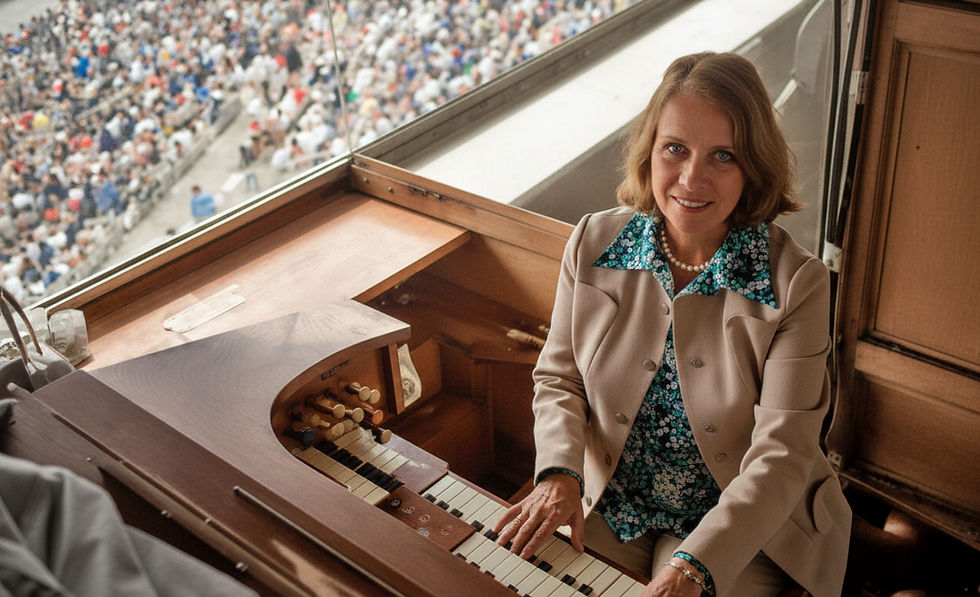Sunday School: Forgotten Faces of Flushing #37: From Norfolk to Nippon: The Roberto Petagine Tale
- Mark Rosenman

- Sep 14
- 3 min read

Welcome back to Sunday School: Forgotten Faces of Flushing, our weekly rummage through the Mets’ attic, where we dust off the bubble-gum cards and game-used jerseys of the guys who made you squint and go, “Wait… didn’t he play for us?”
Last week, we looked at Randy Milligan, the Tidewater Titan who mashed in the minors, barely got a sip of coffee at Shea, and then proved himself elsewhere. This week, we jump ahead to the plaid-shirt-and-flannel ’90s, where the Mets’ farm system had its own hidden gem, a guy who was so good at Triple-A that fans couldn’t believe he wasn’t playing in Queens every day.
His name? Roberto Petagine.
If you were following the box scores out of Norfolk in the mid-’90s, you knew the name well. The Mets got him from Houston in December 1993, and all he did was hit. In 1994, Petagine batted .309 with 19 homers, 93 RBIs, and a .422 on-base percentage. In 1995, he followed with a .300 average, 15 homers, 85 RBIs, and a ridiculous .426 OBP. He wasn’t just knocking on the door—he was pounding it like Sheldon on Penny’s door: ‘Penny… Penny… Penny

But the Mets? They never opened it.
Instead, Petagine sat behind a musical chairs lineup of first basemen: David Segui, Rico Brogna, and eventually John Olerud. The timing couldn’t have been worse. Olerud in particular was entrenched, smooth with the glove and lethal with the bat. For Petagine, that meant Queens was closed for business.
He did get a look—62 games across 1996 and ’97—but it was hardly the kind of chance a hot prospect dreams about. In that time, Petagine batted .211 (24-for-114) with 4 home runs and 19 RBIs, drawing 12 walks but also striking out 33 times. His OPS with the Mets sat at .630, a far cry from the .800-plus marks he regularly posted in Triple-A.
In short, it was a flicker, not a flame. The Mets never gave him the at-bats to see if his minor-league patience and pop would translate.. By the time the late ’90s Mets turned into contenders, Petagine was gone, traded to the Reds.
And here’s the kicker: while the Mets and Reds saw a roster filler, Japan saw a superstar.Petagine crossed the Pacific in 1999 and became a legend. With the Yakult Swallows, he hit 44 homers his first season and was named Central League MVP. Over the next decade, he launched 233 home runs, collected more than 1,000 hits, won seven Gold Gloves, and built a career that earned him a place among the greatest foreign players in Japanese baseball history. Over there, he was the kind of hitter Mets fans dreamed he might be here.
For Mets fans, Roberto Petagine is a trivia answer. For Japanese fans, he’s a folk hero. And for baseball diehards, he’s the poster boy for the dreaded “AAAA player”: too good for Triple-A, not given enough leash in the majors, and left to carve out greatness somewhere else.
Petagine’s time in Queens amounted to just over 100 at bats, but in the long ledger of Mets lore, he represents another one in a long line of “what if?” prospect. What if he’d gotten 500 at-bats in Flushing? What if the Mets had given him the same patience he showed at the plate?

We’ll never know. What we do know is that Roberto Petagine was one more Forgotten Face of Flushing, a guy who mashed in Norfolk, never got his shot at Shea, and then took his talents halfway across the world to prove what the hype was all about.
And that, in a way, is why we do Sunday School. Because the Mets aren’t just about the big names etched in Shea’s concrete or Citi’s outfield fence. They’re also about the Roberto Petagines—the guys who made us wonder, dream, and shake our heads years later when we realize the talent was there all along.




Comments